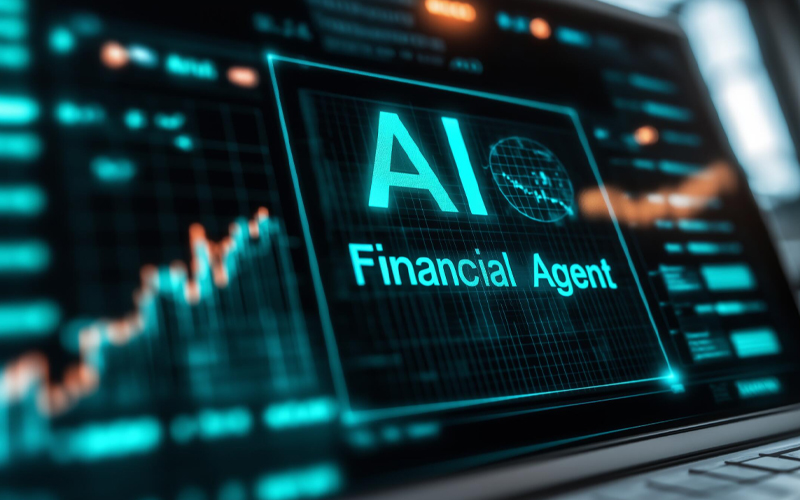What is generative ai and why is it creating such a buzz in the business world? Generative AI refers to artificial intelligence systems that can create new content—including text, images, music, code, and more—that wasn’t explicitly programmed. These systems learn patterns from existing data and then generate new outputs that mimic those patterns while creating original content.Unlike traditional AI systems that focus primarily on analysis and prediction, generative AI excels at creation and innovation, opening new possibilities for businesses across all sectors.
The technology represents a significant leap forward in artificial intelligence capabilities, enabling machines to not just analyze but create. When exploring what is generative AI, it’s important to understand both its capabilities and limitations in a business context. From generating marketing copy to designing new products, generative AI is rapidly transforming how businesses operate and innovate.
Many executives are asking what is generative AI and how it can transform their operations. At its core, generative AI uses sophisticated neural networks to learn patterns from vast amounts of data, then applies this learning to generate new, original content that maintains the characteristics of the training data. This ability to create rather than just analyze is what distinguishes generative AI from other forms of artificial intelligence.
How does generative AI work
Understanding how generative AI works provides crucial insights for businesses looking to implement this technology effectively. At its foundation, generative AI operates through sophisticated neural networks with multiple interconnected layers that process and transmit information. These neural networks learn patterns from vast datasets and then use this learning to create new content.
The architecture of generative AI typically consists of two primary components working in tandem:
- Generator: Creates new data instances based on patterns learned during training
- Discriminator: Evaluates the authenticity of the generated content by comparing it to real examples
This two-component framework creates a feedback loop that continuously improves the quality and accuracy of the generated outputs. When explaining how does generative AI work, it’s essential to cover the underlying neural network architecture that enables this sophisticated process.
The training process incorporates several methodologies:
| Learning Type | Description | Business Application |
| Supervised Learning | Uses labeled data with specific inputs and outputs | Direct pattern matching for structured business problems |
| Unsupervised Learning | Explores unlabeled data to discover hidden patterns | Finding unexpected insights in business data |
| Reinforcement Learning | Learns through trial and error with reward signals | Optimising business processes through continuous improvement |
Many business leaders want to know how generative AI work does before investing in implementation. The process involves data processing through vector space encoding, where information is mapped as data points to identify correlations and patterns. This mathematical foundation enables generative AI to create content that appears to understand context and meaning, making it valuable for numerous business applications.
Evolution of generative AI models
Generative AI models have evolved over decades, building on the concepts of statistical modelling, neural networks, and deep learning. While early generative models focused on mathematical simulations and predictive models, the field has accelerated with the rise of deep generative architectures, such as:
Diffusion models
Diffusion models reverse a noising process to generate high-resolution data. Their primary application includes generating photorealistic images with remarkable stability and detail.
Variational Autoencoders (VAE)
VAEs use probabilistic inference to generate new data points. They are useful in scenarios where variation and interpretability are essential, like drug discovery or fraud detection.
Generative Adversarial Networks (GAN)
GANs pit two neural networks against each other – a generator and a discriminator. This architecture produces realistic synthetic data, especially in image and video generation.
Transformer Networks
Transformers power many of today’s leading generative AI applications. By handling sequential data efficiently, they enable advanced language modelling, from summarisation to code generation.
Benefits of generative AI
Businesses are adopting generative AI for its transformative impact across multiple functions. From automating time-intensive tasks to fuelling breakthrough innovations, it reshapes how modern enterprises operate. Generative AI applications help enterprises:
- Automate and accelerate routine tasks, saving time and resources.
- Boost employee productivity by automating repetitive and creative tasks.
- Optimise business processes through intelligent automation.
- Enhance customer experience with personalised, real-time interactions.
- Create new original content fast, including text, images, and media.
- Improve the efficiency and accuracy of existing AI systems by providing synthetic training data.
- Accelerate research by generating hypotheses, content, and simulations rapidly.
- Explore and analyse complex data to uncover hidden patterns and trends.
generative AI examples across industries
From content creation to code generation, generative AI examples span industries and functions:
 Language generation - Generative AI tools can write emails, generate reports, and create dialogue systems.
Language generation - Generative AI tools can write emails, generate reports, and create dialogue systems.
 Visual content - AI can design logos, generate artwork,
Visual content - AI can design logos, generate artwork, or simulate virtual environments.
 Audio and music - Generative AI models can compose music, generate voiceovers, and even mimic real voices.
Audio and music - Generative AI models can compose music, generate voiceovers, and even mimic real voices.
 Synthetic data - AI tools can generate data to train machine learning and AI systems where real data is scarce.
Synthetic data - AI tools can generate data to train machine learning and AI systems where real data is scarce.
The real power of generative AI examples lies in how they address unique challenges across specific industries. This technology enables businesses to push boundaries, innovate faster, and deliver value more effectively.
Automotive and manufacturing
In the automotive and manufacturing sectors, generative AI examples include design optimization, predictive maintenance, and supply chain management. Highlighted addition: Looking at generative AI examples in manufacturing shows how the technology improves design processes and quality control through automated pattern recognition and anomaly detection. Companies like BMW and Siemens are using generative design to create lighter, stronger components while reducing material waste.
Healthcare and natural sciences
Within healthcare and the natural sciences, researchers are using generative models to discover new drug molecules and enhance diagnostic accuracy through AI-supported medical imaging. This accelerates innovation and improves patient outcomes.
Media and entertainment
In media and entertainment, studios are relying on AI to streamline game development, automate scriptwriting, and produce realistic CGI effects, saving time and creative effort while scaling production.
Financial services
Financial services use generative AI to build advanced risk models, automate compliance reporting, and detect fraudulent activities in real time, thereby strengthening trust and security.
Telecommunications
Telecommunications providers deploy AI for customer segmentation, delivering hyper-personalised services and supporting intelligent virtual agents that improve customer service experiences.
Generative AI offers practical and high-impact solutions across industries tailored to domain-specific demands.
generative AI in business process management
In the Business Process Management (BPM) industry, generative AI is redefining how organisations design, monitor, and optimise workflows. From predictive modelling to hyper-personalised marketing, its implications span across operations, helping businesses streamline performance, improve coordination, and gain competitive advantage.
Process modelling and forecasting
Predictive process modelling helps identify inefficiencies and simulate multiple outcomes before any real-world deployment. This empowers teams to make data-driven decisions, reduce bottlenecks, and stay agile.
Data integration and scalability
Generative AI can support the planning phase when integrating disconnected data systems while ensuring consistency, reliability, and transparency. It also enables companies to scale operations without compromising performance or accuracy.
Smarter sales and internal alignment
Sales teams can use AI to identify leads, qualify them faster, and fine-tune their messaging and sales pitches through customer insights and AI-guided recommendations. Generative AI also helps promote better coordination across departments by aligning goals and streamlining workflows.
Hyper-automation and personalisation
With hyper-automation, businesses can automate dynamic tasks using AI-driven workflows, chatbots, and real-time data. They can also personalise customer journeys based on behavioural insights, leading to improved satisfaction and conversion rates.
Organisational efficiency and insights
Generative AI enhances analytics capabilities by delivering real-time insights and predictive forecasts. It supports continuous improvement by revealing optimisation opportunities within existing processes.
Marketing and campaign management
Generative AI transforms marketing by producing content tailored to audience segments, optimising campaign performance, and managing social channels with real-time feedback. It empowers marketers to be more responsive, data-driven, and creative.
implementation: generative AI adoption best practices
Successful implementation of generative AI requires a strategic approach that aligns technology adoption with business objectives. Organizations should begin by identifying specific use cases where generative AI can deliver the most value, rather than implementing the technology broadly without clear goals.
A phased implementation approach typically yields the best results:
- Assessment Phase: Evaluate current processes and identify opportunities for generative AI integration.
- Pilot Implementation: Start with small-scale projects to demonstrate value and learn from implementation challenges
- Scaling Phase: Expand successful implementations across the organization with appropriate governance
- Continuous Improvement: Regularly review and refine AI implementations to ensure ongoing value
Data quality is paramount for effective generative AI implementation. Organizations should establish robust data governance frameworks to ensure that AI systems are trained on high-quality, relevant, and unbiased data. This includes data cleaning, normalization, and ongoing maintenance processes.
Change management represents another critical success factor. Employees may have concerns about job security or lack understanding of how to work effectively with AI systems. Comprehensive training programs, clear communication about the role of AI, and involvement of employees in the implementation process can help address these concerns.
Finally, establishing appropriate governance frameworks ensures that generative AI is used ethically and responsibly. This includes monitoring for bias, ensuring compliance with regulations, and maintaining human oversight of AI-generated outputs.
limitations of generative AI models
Despite its immense potential, generative AI faces several critical challenges that business leaders must navigate to realise its full value. These limitations can impact everything from system reliability to ethical adoption across organisations.
- Data bias and lack of high-quality training data can reduce output accuracy and create skewed or non-inclusive results.
- Generative AI models may produce factually incorrect or misleading content (or hallucinations), which undermines user trust.
- Worker displacement could increase as automation replaces traditional roles, resulting in low employee morale and resistance to change.
- Data security and privacy risks escalate, especially when handling sensitive, confidential, or regulated data.
- Limited creativity and originality could mean AI often reproduces patterns from training data without the depth of human insight.
- High implementation costs and compute infrastructure requirements can pose a barrier for smaller firms that lack the capital to adopt advanced AI tools.
- Slow sampling speeds can hinder the use of generative AI models in real-time decision-making and customer-facing applications.
generative AI adoption best practices
Successful adoption of generative AI requires a clear, action-driven approach. Without proper planning, businesses risk poor integration and limited return on investment. Here are key best practices that can simplify the adoption process and help businesses navigate generative AI limitations irrespective of industry or use case:
- Start with internal use cases that address specific pain points and deliver measurable business outcomes.
- Promote transparency by clearly explaining how AI works and involving key stakeholders throughout the process.
- Implement robust security protocols to protect sensitive data and comply with regulations.
- Carry out thorough testing and validation to guarantee consistent, high-quality performance in live environments.
Conclusion
Evolving beyond a futuristic concept, generative AI is actively reshaping how modern businesses operate. From automating content creation and streamlining workflows to enhancing decision-making and customer experiences, its impact is visible across sectors and functions. In the BPM industry, it drives greater efficiency, scalability, and agility through intelligent automation and real-time insights.
Organisations are leveraging generative AI to model processes, integrate data, personalise engagement, and optimise performance at scale. However, to harness its full potential, businesses must approach adoption with strategic clarity. This includes focusing on transparent implementation, robust security practices, thorough validation, and choosing scalable, ethical AI frameworks. By aligning innovation with business goals and operational integrity, organisations can turn generative AI into a sustainable competitive advantage.
FAQ
1. What is generative AI in simple terms?
Generative AI refers to a type of artificial intelligence that can create new content, such as text, images, audio, or videos, by learning patterns from existing data. It enables machines to generate original outputs based on the information they have been trained on.
What is the difference between AI and generative AI?
AI (Artificial Intelligence) is a broad field that involves machines performing tasks that typically require human intelligence, such as decision-making and problem-solving. Generative AI, a subset of AI, specifically focuses on creating new, original content (e.g., text, images, videos) rather than just analyzing or classifying existing data.
2. What are examples of generative AI in business?
Generative AI is used in various business applications, such as:
- Content Creation: Automatically generating marketing copy or product descriptions.
- Customer Support: AI-driven chatbots that provide real-time customer assistance.
- Design: Generating product designs, logos, or 3D models for industries like fashion and automotive.
- Personalization: Creating tailored recommendations in e-commerce platforms based on customer data.
3. How does generative AI work?
Generative AI works by training models on large datasets to recognize patterns and structures. It then uses this learned information to create new content. For example, a text generation model like GPT-3 learns language patterns to produce coherent text, while image models like Stable Diffusion generate realistic visuals based on input text.
4. What are the limitations and ethical considerations of generative AI?
Limitations include the need for large amounts of high-quality data, computational power, and potential biases in generated content. Ethical considerations involve issues such as data privacy, intellectual property, and the risk of generating misleading or harmful content. Ensuring transparency and responsible AI use is essential to address these concerns.







